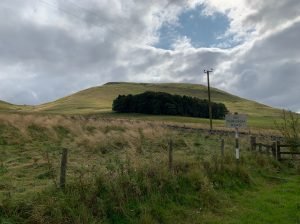Over the last five years Iron-Age specialists have been re-examining what British hillforts were really for. The question is no longer just “fortress or farm?” but whether many of them were built first and foremost as places of gathering, display and ritual.
Location: Northumberland
Woden Law Hill Fort
Wodens Law is actually the name of the great mountain that the Hill Fort is perched upon. Ok, so its not a mountain being a mere 500m high, but in this wild and desolate landscape it looks a lot more.The facts of the fort are impressive: there are multiple levels of ditch and bank defences surrounding the peak. There are considered to be three phases of occupation: firstly, a wall enclosed a substantial occupation area, this dated to the first century AD.
Brigantia
The name Brigantia represents three separate concepts: a goddess, a people, and a tribal federation. By the Roman period, the name represented a tribal federation compromising all of what would become the Roman province of Britannia Secunda, except for the Parisi territory, east of the River Derwent.
Northumberland
The county of Northumberland, with its rich tapestry of history, has undergone significant transformation since 50 AD. Initially, under Roman occupation, Northumberland was a frontier zone, where Hadrian’s Wall marked the edge of the Roman Empire. Post-Roman Britain saw the region become a part of the Anglo-Saxon kingdom of Northumbria, a name meaning ‘north of the Humber’, reflecting its vast expanse.











